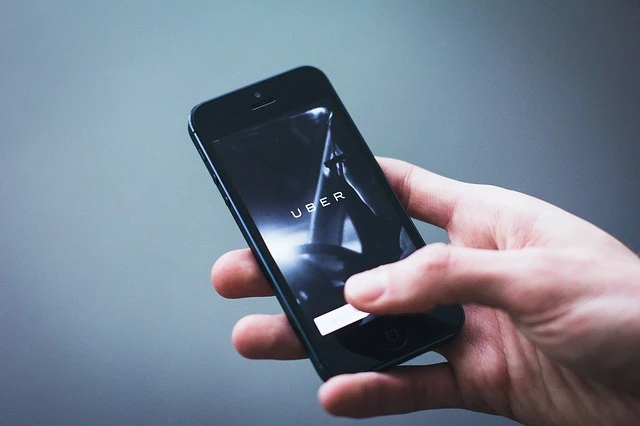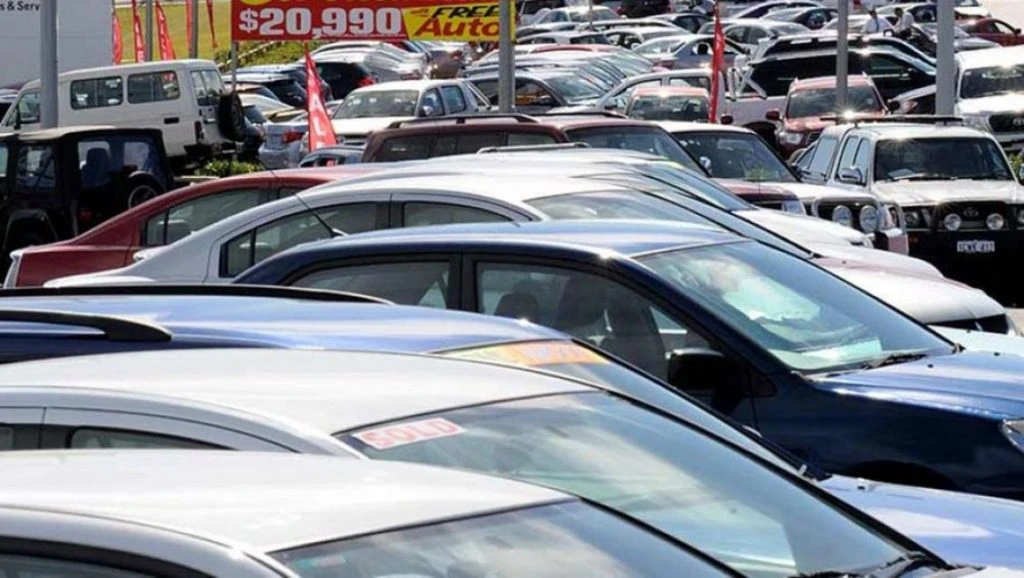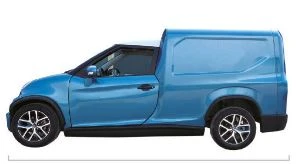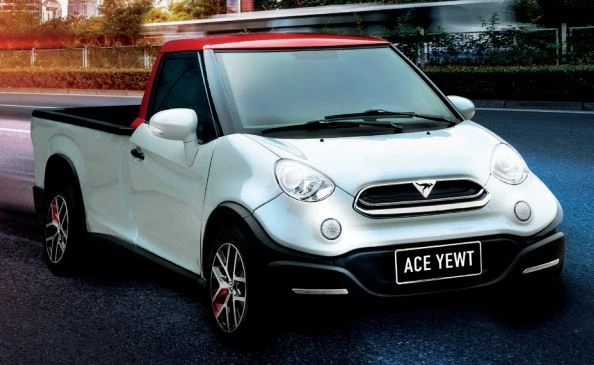Australia
The Commodore To Be No More.
 December 10th, 2019, will be the day that Australia was told of the passing of an icon. This is the complete PR release from Holden.
December 10th, 2019, will be the day that Australia was told of the passing of an icon. This is the complete PR release from Holden.
Holden is today announcing a modified portfolio dedicated exclusively to SUVs and light commercial vehicles.
Holden Interim Chairman and Managing Director, Kristian Aquilina, said the focus of the portfolio was consistent with customer preferences, with the Acadia, Trailblazer, Equinox and Trax rounding out a comprehensive SUV portfolio; and the Colorado tackling rivals in the light commercial vehicle (LCV) segment.
“Holden is taking this decisive action to ensure a sharp focus on the largest and most buoyant market segments. So far this year SUVs and Utes have increased to 76 percent of Holden sales, a trend we only see continuing,” he said.
The company has elected to retire the ZB Commodore and the BK Astra in 2020.
At its peak, the large car segment in Australia accounted for 217,882 sales in 1998. This year it is projected to come in at about 8,700 units.
“The SUV segment is approaching half a million units, and LCVs over 200,000 units. That’s where the action is and that’s where we are going to play,” Mr Aquilina said.
The new Holden boss also paid tribute to the Commodore nameplate and its place in the Australian automotive industry over time.
“The decision to retire the Commodore nameplate has not been taken lightly by those who understand and acknowledge its proud heritage,” he said.
“The large sedan was the cornerstone of Australian and New Zealand roads for decades. But now with more choice than ever before, customers are displaying a strong preference for the high driving position, functionality and versatility of SUVs and Utes.”
Sales and deliveries of Commodore and Astra will continue through 2020, albeit with diminishing model availability as part of an orderly runout.
Existing Commodore and Astra customers can be assured that Holden will continue to back warranty and roadside assistance commitments, with spare parts supply guaranteed well into the future.
In addition, all MY19 ZB Commodores and MY19 BK Astras ordered or delivered from today onwards will be subject to Holden’s market leading seven-year free scheduled servicing offer.
All arrangements for accessing warranty, servicing and spare parts for Holden’s entire model line-up via the Holden’s national dealer network remain the same.
Holden will be launching the MY20 Equinox in the first quarter of 2020 followed by a significant MY21 upgrade to the highly regarded Colorado to launch in Spring. Holden will also lodge production orders to GM’s Bowling Green factory for the highly anticipated mid-engine right-hand-drive Corvette next year.
These sentences have sparked furious debate between supporters and detractors, with one common theme being “why didn’t they call the Commodore something else” after local manufacturing ceased in 2017. Then there are comments about a lack of relevant marketing for the ZB, indifferent dealership service, lack of support for just-out-of-warranty issues, balanced against “it’s not a real Commodore” due to the lack of V8, ute and wagon, and the shift to front wheel drive. Toss in a mix of “football, meat pies, kangaroos, and Holden cars” as Australian made before the inexorable slide to very little of the VF actually being manufactured in Australia, and the anger and frustration levels of people becomes ever more evident.
What will remain is also divisive. The ZB Commodore was a bloody good car. But it was also never given a real chance at survival for a number of reasons. Ignorance and bias are two, and more’s the pity as it’s fair to presume detractors that decried its front wheel drive layout would not have taken the time to test drive it, and find out it actually drove like a Commodore.
Holden Commodore. Born 1978. Died painfully in 2020.
Millennials, It's Your Fault New Car Sales Are Sliding…Apparently
The sharp drop in new car sales throughout 2019 has had no shortage of publicity, particularly now that 18 consecutive months of declining figures have come through. Over that time we’ve heard from experts as to a variety of factors that have contributed to the rut.
From political uncertainty before this year’s election, to a tightening in lending regulations, a weakening economy led by subdued house prices, the effects of a drought, and believe it or not vehicle shipments contaminated by little bugs! Now you can add another ‘explanation’ to the list because millennials, it’s your fault new car sales are sliding…apparently.
The underlying trends
You see, the shifting trends among millennials are pointing to a change in views towards car ownership. Younger Australians are holding onto their first vehicle for a longer period of time, or otherwise putting their driver’s licence on the back burner. There is testimony from some industry insiders to suggest that millennials are less comfortable with the idea of a loan than previous generations given a tendency to spend more to stay up to date with the latest technology or to fuel travel and entertainment aspirations.
The prompts are largely coming about through the influence of technology, including the role it is playing on behavioural patterns. First and foremost, the rise of apps like Uber and Ola have reduced dependency on individual vehicle ownership, instead promoting the benefits of a flexible ride-sharing fleet. Online food and grocery services follow the same notion, where a few simple touches on a mobile phone are enough to avoid making that trip to the supermarket.

At the same time, we’re also seeing far greater levels of urban consolidation take place in our major cities. Given the significant rise in house prices since the end of the GFC, many millennials are forgoing the Australian dream to own a home. An increasingly popular choice of action is to rent in highly desirable locations, which typically translates to inner city living or convenient public transport links nearby – both reducing dependency on vehicle ownership.
Finally, vehicle subscription services and peer-to-peer car sharing are becoming more commonplace in this demographic segment as well. A variety of companies have latched onto this trend, allowing anyone to borrow a car from a friendly stranger in their neighbourhood. Who would have thought it would be possible all those years ago?
Is there more to it than meets the eye?
Notwithstanding the trends that are taking place, the conversation has really only started to emerge in recent months. Look a little further back however, and what you realise is that new car sales were coming off an all-time high. Quite frankly, a level that some would argue may well turn out to be a short-term peak, or an otherwise unsustainable level once evidence of a slowing economy emerged. These trends have been occurring for some time now, so should have been observed earlier on sales data.

Furthermore, many of these trends are being attributed to millennials, but they sure as heck aren’t the only ones nurturing such changes. Those who have been brought up through these technological and societal changes become an easy target to point the finger at for ‘leading the way’ so to speak, but if this was really at the heart of the matter, then a range of buying incentives should suffice among other demographics to offset this decline.
But the facts remain, we’re seeing high levels of population growth, the lowest interest rates on record, and vehicle prices as affordable as they’ve ever been before. If those initiatives aren’t getting other buyers into the market, to offset a supposed wane in interest among millennials, where does the fault really lie?
Sales Are Down Again For The Aussie Market.
 The Federal Chamber of Automotive Industries, or FCAI, has released the June 2019 vehicle sales figures for Australia’s once thriving market. What it reveals is a pointer to the rest of the economy, with sales down overall by 9.6 percent. Compared to the same time in 2018, it’s even more drastic, at 18.5 percent lower for the passenger car segment at 33,864 sales.
The Federal Chamber of Automotive Industries, or FCAI, has released the June 2019 vehicle sales figures for Australia’s once thriving market. What it reveals is a pointer to the rest of the economy, with sales down overall by 9.6 percent. Compared to the same time in 2018, it’s even more drastic, at 18.5 percent lower for the passenger car segment at 33,864 sales.
June 2019 saw 117,817 sales in total, with SUVs and Light Commercial vehicles down to 53,509 and 26,372 respectively. These two segments saw drops of 4.7 and 7.0 percent each. The market leader in June was Toyota with 21,200 sales, followed by Mazda on 10,806, Hyundai with 10,001, Mitsubishi at 8,891, and Kia with 7,200. However it’s good news for one particular brand, with four entries inside the top ten.
Toyota takes out the top of the ladder, with the HiLux moving 5,396 units, but still down on last year by 6.9%. Ford’s Ranger is position 2 and showed a slight increase of 1.7%, up to 4,871 units. Grid position 3 belongs to Hyundai’s i30 range with 3,340, down by 5.8%. Toyota’s evergreen Corolla went to 3137 unit’s and that’s the third biggest decrease in the top ten at 17.3%. Position five is Mazda’s CX-5, down by 7.2% to 2,911.
Kia’s new Cerato is the big mover, up by 14%, with 2,832 unit finding new homes for position 6. Position 7 was Mitsubishi’s Triton, and compared to June of 2018 it’s down by 31.2% but this is accounted for by the outgoing model being on runout some time ago. The Mazda3 goes into Position 8 with 2,533 units, but that’s down by 23.9% compared to June 2018. Toyota takes out positions 9 and 10 with the RAV4 and Landcruiser, with 2,449 and 2,360. Again, though, they’re down by 9.0 and 707% respectively.
In brand sales Toyota holds top spot ahead of Mazda and Hyundai. Mitsubishi heads Ford for 4th and 5th, whilst Kia, Volkswagen, Nissan, Honda, and Holden fill out the top ten. It’s worth noticing that some of the brands in the top ten overall don’t feature in the top ten vehicle types. Nor do some of the more supposedly popular brands such as Mercedes-Benz or BMW.
The EV From Down Under
 We were all very sad when we got the news that those iconic Australian cars – Ford and Holden – were no longer going to be manufactured here and that the factories were closing their doors. However, we can all smile again for the sake of the Australian automotive industry: a new company in Queensland is going to manufacture a car from scratch. Great!
We were all very sad when we got the news that those iconic Australian cars – Ford and Holden – were no longer going to be manufactured here and that the factories were closing their doors. However, we can all smile again for the sake of the Australian automotive industry: a new company in Queensland is going to manufacture a car from scratch. Great!
There’s a slight difference with this newcomer, though. Unlike the gas-guzzling Ford Falcons and Holden Commodores (OK, they were a bit better when driven on the open road but that’s another story altogether), this new company, ACE EV, is turning its eyes to the hot new sector of the automotive industry: electric cars.
Well, to be more specific, it’s going in for electric vans and commercial vehicles as well as cars. And, to be fair, the factory is going to be using some parts that were manufactured overseas as well as a few made here. The idea is to keep the costs down. They’re not out to produce Tesla clones at Tesla prices. Not that there’s anything wrong with Tesla per se and it’s neat to see electric vehicles that have bust out of the boring, crunchy-granola, wimpy image and become supercool. However, a brand new Tesla probably costs more than what I paid for my house. ACE EV, however, wants to make EVs more affordable for the typical tradie or suburban family.
ACE EV stands for “Australian Clean Energy Electric Vehicles”. Proudly Australian, their logo features a kangaroo on the move. This year (2019), they are launching three vehicles, targeting tradies as well as your typical urban motorist, although they’re only selling them to companies as fleet vehicles at this stage. These are the ACE Cargo, the ACE Yewt and the ACE Urban.

ACE Cargo
The Cargo is designed to, um, carry cargo. It’s a van that’s capable of carrying a payload of 500 kg and has a range of 200 km if it’s not carrying the full load. The Cargo is designed to be suitable for couriers and anybody who has to carry gear or people from one side of town to the other: florists, caterers, cleaners, nurses and the people who carry blood samples from the medical centre to the lab for analysis. Looks-wise, it’s broken out of the square box mould of traditional vans, probably for aerodynamic reasons, and resembles a single-cab ute with a hefty canopy.

Ace Yewt
Which brings us neatly to the Yewt. The Yewt is what it sounds like (say Yewt out loud if you haven’t got it yet). It’s a flat-deck single-cab ute and as it’s got more or less the same specs as the Cargo regarding load, charge time and acceleration. You’d be forgiven for thinking that t it’s the same thing as the Cargo but with the cover on the cargo area taken off. It’s something of a cute ute – and the contrasting colour roof is a nice touch.

Last but not least, there’s the Urban, which is no relation to the Mitsubishi with the notoriously weird name (Active Urban Sandal). This one’s still in the pipeline and they haven’t given us the full specs brochure yet (it’s due for release later this year), but this is a classic four-seater compact three-door hatch that looks a bit like a classic Mini but edgier.
It’s certainly nice to see some new vehicles made in Australia for Australians, especially given that in a recent poll, about half of all Australians in an official survey by the Australia Institute would support a law that all new cars sold after 2025 should be EVs. However, let’s not rush things too much yet. For one thing, EVs are only one of the Big Three when it comes sustainable motoring (biofuels and hydrogen are the others). The other thing is that all energy has to come from somewhere, even electricity, as stated by the First Law of Thermodynamics. This means that in order to charge your EV, you’re going to have to generate the electricity somehow and get it to the charging points. Before we go over lock, stock and barrel to EVs, we will need better infrastructure, and I don’t just mean more EV charging points around town and in our homes. We’ll need some more generators. Otherwise, it would be like setting up a bowser but having no petrol to put in it. If everybody were to try charging their EVs at home overnight, there would be a massive drain on the national grid and we’d be getting brownouts and blackouts all over the show –which means that watching TV, catching up on your emails, having a hot shower and cooking dinner would get rather difficult – and you wouldn’t be able to charge your EV either. Guess where the power companies will have to get the money from in order to build new power plants – that’s right: your power bill.
May I humbly suggest that before you invest in an EV for your commute that you also consider installing a solar panel or three on your home? Or a wind generator? Not one of those petrol or diesel-powered generators – swapping an internal combustion engine in your car for one in the back yard isn’t better for the environment now, is it? Unless you run it on biofuel or hydrogen.